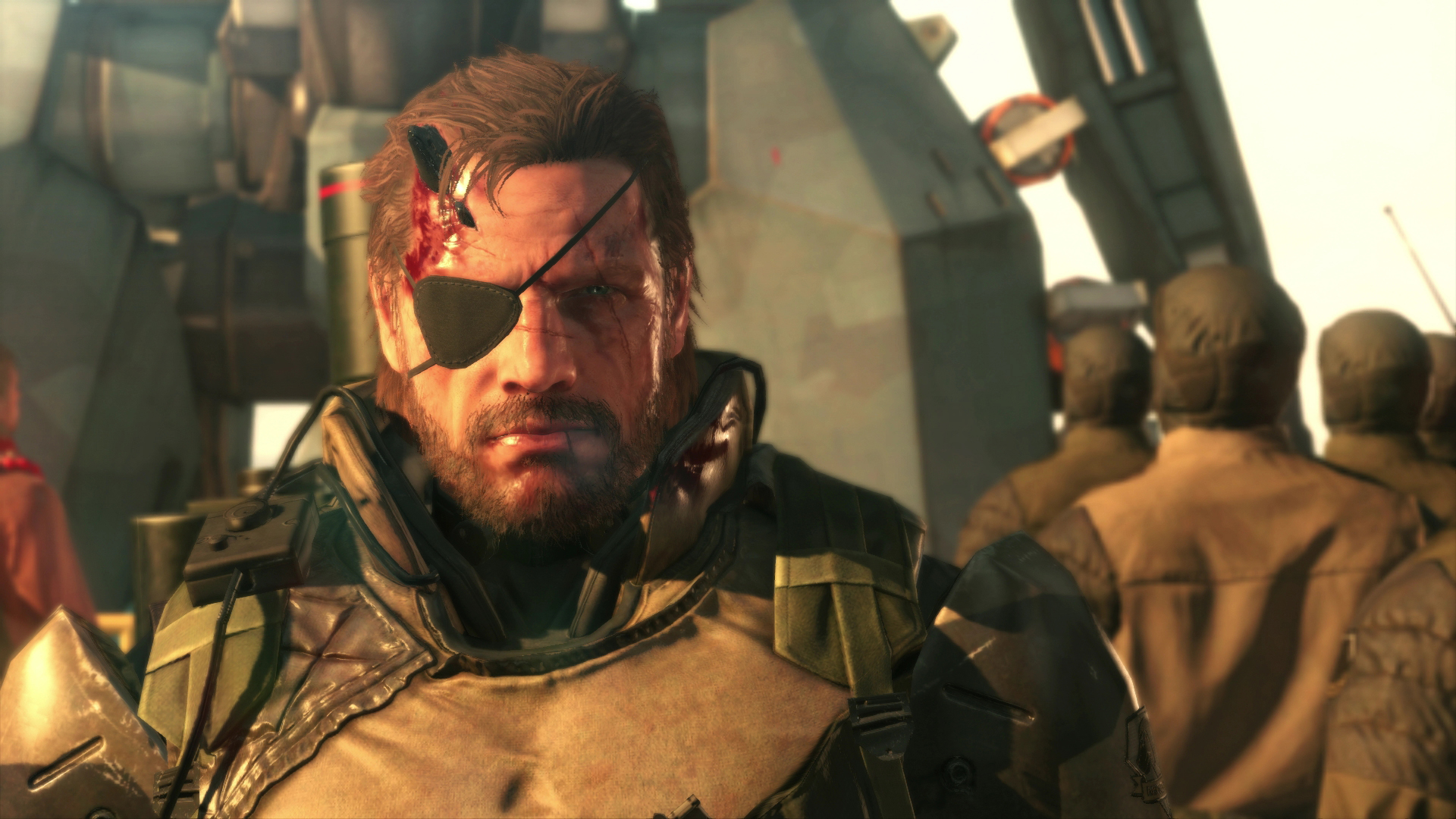Our Verdict
A generous stealth sandbox masterpiece that'll delight both new and existing fans of Metal Gear.
PC Gamer's got your back
What is it?
Open world sequel to a previously console-only cult stealth series.
Price: $60/£45
Developer: Kojima Productions
Publisher: Konami
Reviewed on:
Intel I5 4460@3.20GHz, 8GB RAM, Nvidia GeForce GTX 780
Multiplayer: Coming soon
Link: www.konami.jp/mgs5/
I’ve failed this assassination mission three times now. Each attempt, while searching for an enemy informant who can tell me where my target is, I'm almost immediately spotted by an enemy guard tower in a nearby camp. Spooked by the sudden gunfire, my potential victim makes a prompt getaway by helicopter. The chopper moves too fast for me to hit it, and it’s gone. Mission failed.
But how about this: screw the informant. Forget the objectives. How can my target escape if I make sure there’s no helicopter to begin with?
The getaway chopper I’m looking for doesn’t just spawn out of nowhere—like everything in The Phantom Pain, it’s part of the environment, circling a hill some distance away, waiting for its passenger. I search the helicopter out based on its flight path from my three previously failed attempts and hose it with my grenade launcher until it’s in flames. I just got rid of the problem. No escape.
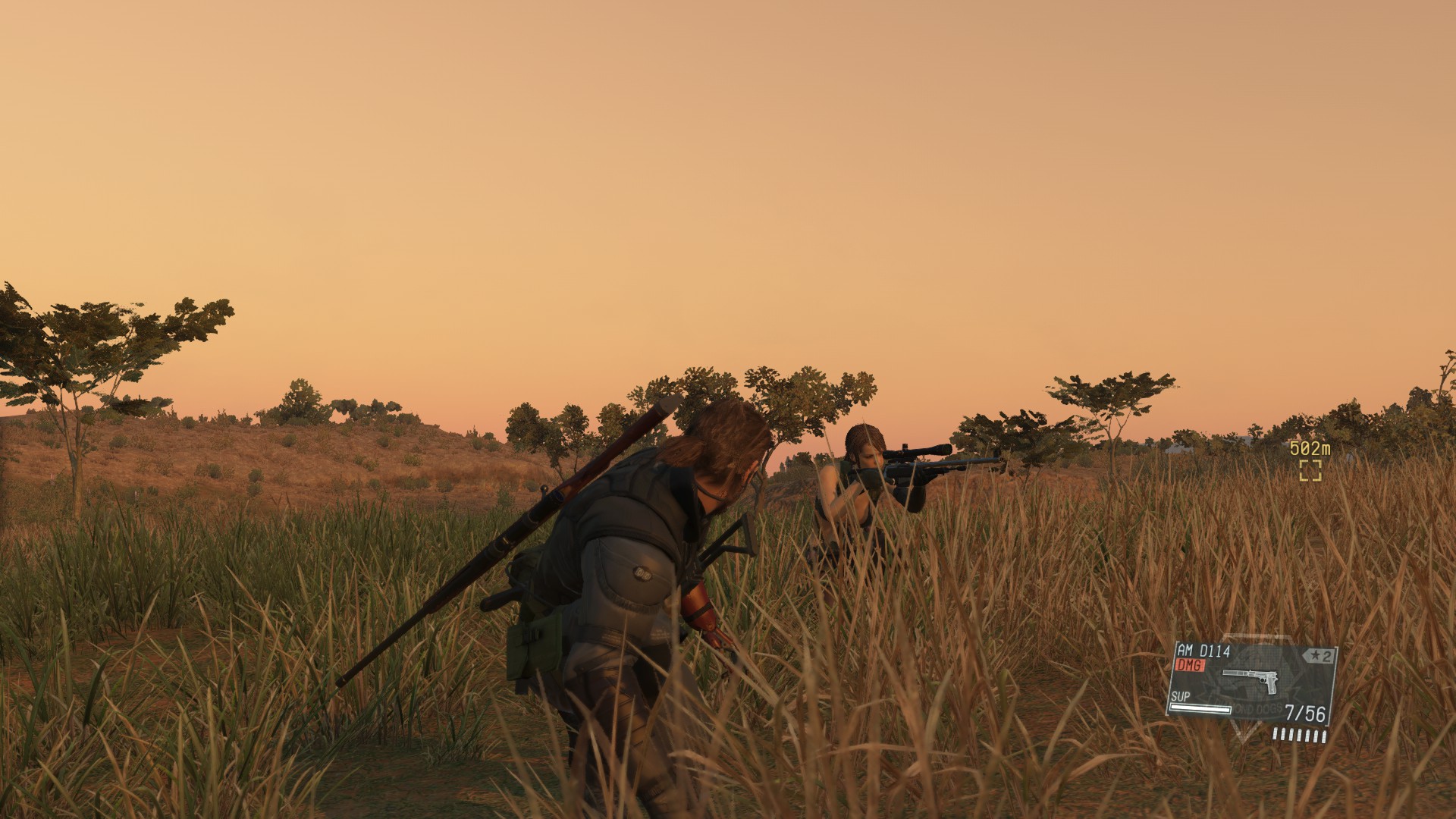
Within five minutes, I’ve killed both my target and the informant by accident, firing rockets randomly at anything that moves. Miller, my mission handler, isn’t pleased I killed the informant without interrogating him first, but the game doesn’t mind. Mission complete.
Metal Gear Solid V celebrates your choices and ingenuity more than any sandbox game I’ve played in years. This mission, and so many others, enables players to figure out the strategy that works for them and run with it. This is a reinvented, systemic Metal Gear Solid with an almost Far Cry-like open world structure, elevated significantly by the choices and subsequent one-off moments you’d encounter in a Hitman or Deus Ex. Crucially, too, The Phantom Pain retains the oddness, detail and some of the character of the MGS series.
A few of my stealth playthroughs that suddenly went wrong became my favourite moments in MGSV. I forfeited a perfect kill-free stealth run of one mission because I couldn’t get a good enough sniper angle on my target before he took off in a chopper. Sprinting up flights of stairs to the helipad, my victim spotted me just in time for me to throw every grenade in my inventory under the chopper, destroying it, vanquishing him and knocking me over, before I made a ludicrously frantic escape on horseback. It was amazing, and I’m not sure it would’ve been vastly improved had I silently shot the guy and snuck out.
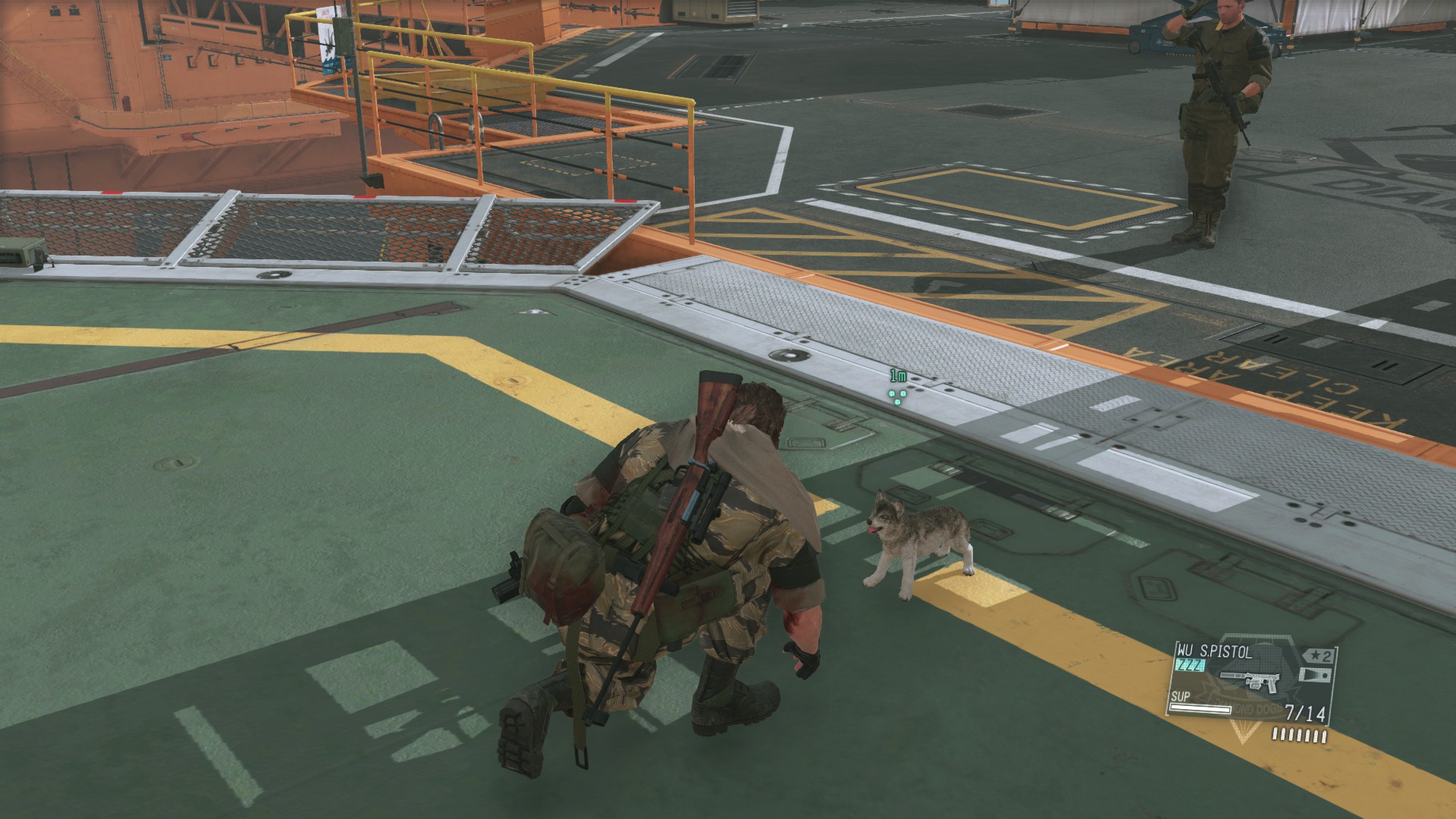
The punishment for a stealth mission going wrong is an exhilarating set piece in a constantly surprising open world. I’ve had weird and wild battles of unending nightmare gunfights across giant bases, battling reams of soldiers, mechs and even a chopper as an ill-equipped one-man-and-a-dog army. Nighttime battlefields fill with smoke, flares and explosions. I’ve had to hide from swarming troops and mortar fire behind buildings, patting my dog for reassurance while I call in more ammo drops, preparing for my second wind as the night turns into morning.
Some hardcore players will never want to find themselves in that position: Metal Gear has always been a stealth-focused series, after all. But when the controls are this good, when your tactical options are so extensive, it’s in no way a bad thing to be part of these escalating, huge-scale battles, which offer the sort of moment-to-moment thrills most action games would struggle to script. Embrace it when things go wrong in MGSV. Nothing boring ever happens when it does.

Graphics options: 4K resolution, V-sync, motion blur, depth of field, model detail, texture settings, texture filtering, shadows, lighting, post processing, effects, ambient occlusion, volumetric clouds
Remappable controls: Yes
Gamepad support: Yes
Like Ground Zeroes, The Phantom Pain’s PC port is really well-optimised. My PC’s specs are pretty decent, but my GTX 780 is two years old, and even with every setting on ultra high I didn’t notice a framerate drop beneath the low 50s, and even going below 60 was pretty rare. Dropping a couple of the settings here makes a consistent 60fps easy to attain.
Like Ground Zeroes, though, the lack of mouse control in the menu screens means this is better played with a controller.
The goal that guides every level (and every Metal Gear) is to sneak through environments without being caught by the enemy—if they spot Snake (or Big Boss), an alert phase ensues until you can lose his attackers. The Phantom Pain’s story missions take Snake to one of two enormous military sandboxes: the cliffs and plains of a Soviet-populated Afghanistan, and later, the swampy Angola-Zaire border. Out in these environments, MGSV throws together smart AI, uncontrollable weather situations and varied types of locations in ways that frequently generate new stories. The mission objectives tend to be a bit basic on the surface—extract this guy, assassinate this informant, stop this convoy—but what happens along the way is often unexpected and almost always exciting.
Heading into a mission, you pick Snake a limited loadout of two primary weapons, one sidearm, and explosives. Importantly though, you can also have anything from your armoury sent to the battlefield at any time via Snake’s iDroid device. Crossing the ten-hour mark, this range of instantly accessible options expands into AI companions of varying skillsets, airstrikes that let Snake summon fire from the skies, helicopters that can provide supporting fire and lots more. As someone who’s enjoyed the entire series, I see this as a natural progression from Metal Gear’s mini stealth sandboxes into something that realises the potential that was there all along, without any compromises.
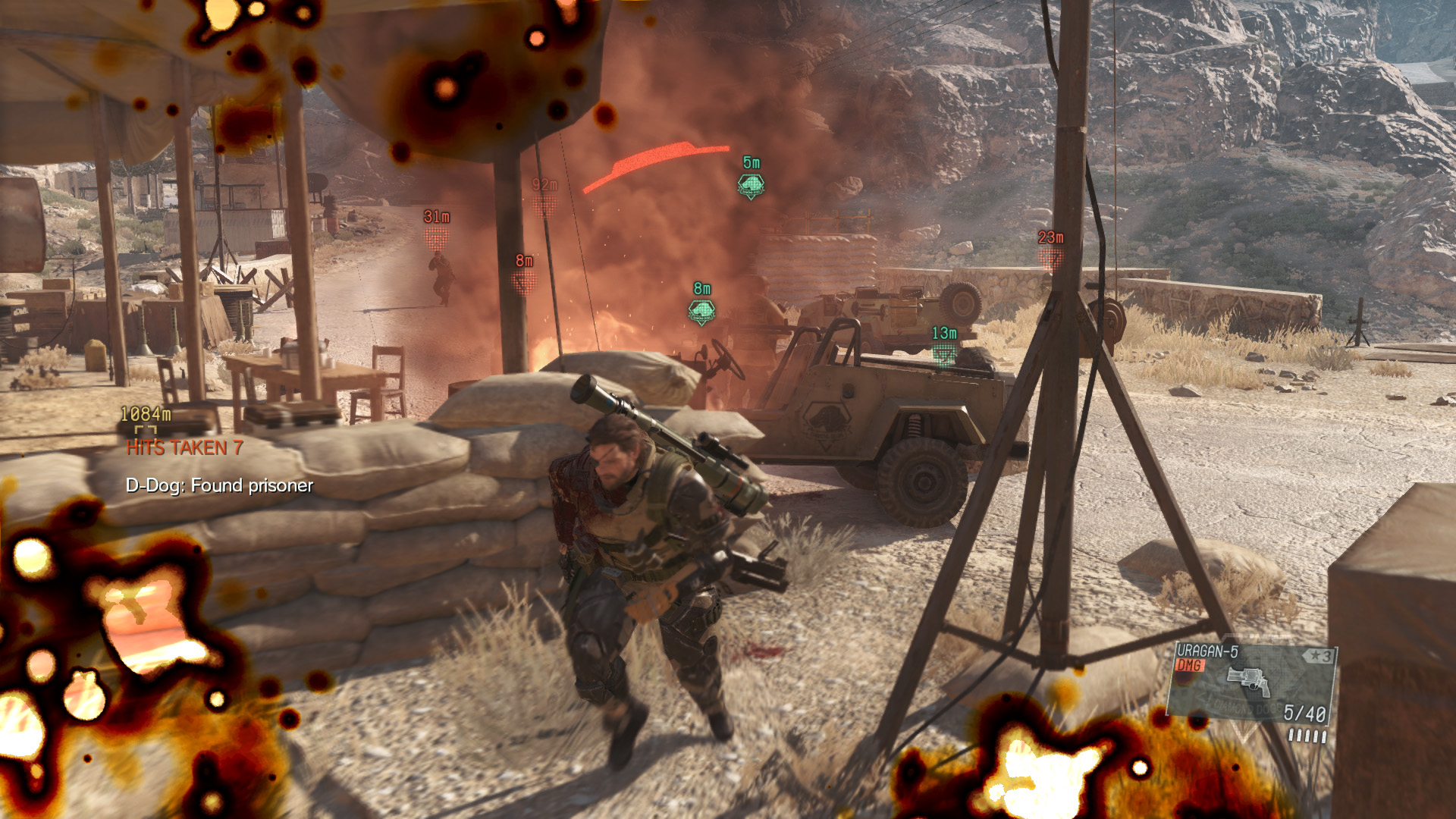
As a result, the balance between game and story has now shifted significantly in favour of the former. It’s so different to previous numbered Metal Gears in its lack of cutscenes that it takes some getting used to. The narrative that’s here, too, is pretty sobre and convincingly serious for a series known for elderly snipers, vampires and men who can fire killer bees. In The Phantom Pain, it’s 1984 and Snake is attempting to rebuild his military offshore haven Mother Base following its destruction at the end of Ground Zeroes (I strongly suggest you play that before this). Having been in a coma for nine years, he’s seeking revenge on those responsible. After a deliberately confusing, scripted intro set in a Cyprus hospital, in which Snake escapes a horrific military attack, story is limited to a few brief cutscenes and a lot of optional audio tapes, the latter of which I only found intermittently interesting and easy to ignore.
The lack of an intrusive story and focus on unscripted sandbox action makes The Phantom Pain feel very contemporary and easy to recommend to new players. That modern approach extends to basic things that MGS has always struggled with, too, like the way Snake moves and controls.
The Phantom Pain shares Ground Zeroes’ intuitive third-person control scheme, which means it’s as much fun to play MGSV like a shooter as a stealth game. It’s important that they got this right, because there’s a lot to consider at once here: marking enemies in nearby settlements using the binoculars, switching to first-person aim with a gun and sneaking up behind soldiers to interrogate them all feel really easy to pull off. While you can remap the keyboard controls, I recommend using a controller for MGSV because the menus were clearly built with that in mind—there doesn’t seem to be a way to navigate the pause screen or iDroid using a cursor, meaning you’re stuck using the keys, which is a bit of a disappointment.
The Phantom Pain is a long game that takes upwards of 50 hours to see everything, and it took me a decent chunk of that time to learn the way everything works. In the field, visibility is affected by the day-and-night cycle, and when you’re deep into an enemy base and the sun comes up, it can be the difference between a perfect stealth playthrough or the final set-piece from an ‘80s action movie. In one base I smugly switched the power off at night to take out a few lights that risked exposing me, only for the sun to come up moments later and a patrolling guard to spot me immediately. I love this as an unpredictable factor in a stealth game, as well as the changing weather conditions like sandstorms or rain, because it’s dramatic and exciting to have something alter your odds mid-mission that you can’t control.
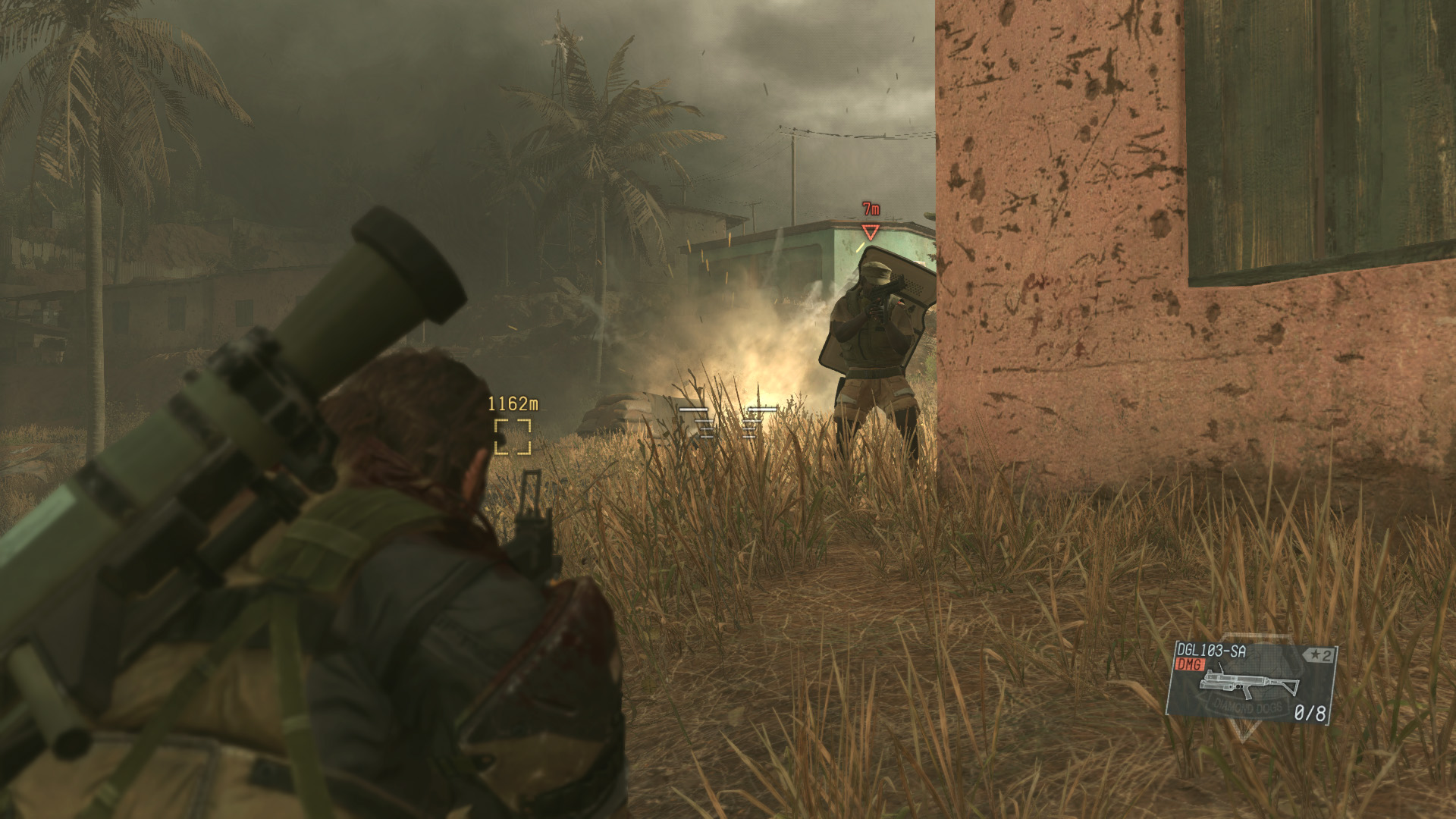
The list of stuff to do in The Phantom Pain is divided into main story missions and Side Ops, and while the latter is mostly composed of optional missions, there are some key shards of story within them, too. It’s almost like an RPG quest structure, with both strands earning you GMP, MGSV’s currency.
Rebuilding Mother Base is the foundation of the story, but it’s also the metagame that ties everything together. This is where you’ll spend GMP and use resources found and collected all over the open world, such as fuel or plants. It’s both an offshore platform that’s Snake’s home between missions and a slightly dull management sim that takes place in menus on the iDroid, but the rewards definitely make the effort worth it.
What happens along the way is often unexpected and almost always exciting.
There’s another side to this, too. In the field, you can kidnap stunned or sleeping (not dead) soldiers using the Fulton Recovery System, which attaches tiny balloons to them and transports them back to Mother Base to join your army. You can then assign them to the various divisions on your base: R&D, where your guys are building new weapons, intel that grants you information on the battlefield, and several others, depending on what their skills suggest they’re best suited to (though the game can automate this if you’d prefer). The Fulton system can also airlift animals from the field, leading to funny images of goats looking confused while hanging in mid-air, and later vehicles and shipping containers.

You can explore your Mother Base on foot, too. What starts as a single floating platform becomes an elaborate network of them that perform different functions. It’s not a particularly fun space to be in, honestly, reminding me of MGS2’s dry mouth-inducing Big Shell (likely a deliberate callback by the artists) or a school trip to Southampton harbour, though it is cool that the soldiers there salute Snake and are happy to be beaten up by him at any time. I once knocked a guy out because he got slightly sassy for me not collecting enough plants from the battlefield. Snake can also shower off any blood stains here.
What makes Mother Base worth the time is that levelling up your divisions is the key to unlocking new weapons, equipment or any other sort of upgrades. Each weapon type has a tech tree: a tranquiliser dart gun can become a more powerful one with a better clip and damage, and so on. New weapon blueprints are found all over the two environments, and the thrill of researching a new grenade launcher and having it instantly dropped into the battlefield is a similar joy you’d get from an RPG crafting system.
Some of the upgrades are frivolous but awesome: you don’t need speakers on your helicopter to play music when it arrives to pick up you up or unload rockets at the enemy, but why not go full Kilgore and have it play Ride of the Valkyries to scare the shit out of the Russians? Music pops up all over the world on collectable tapes, such as A-ha’s Take On Me or Kids In America by Kim Wilde, and you can both listen to them on Snake’s Walkman and have them blare out of your helicopter’s speakers. Custom music works, too. Might I suggest The Man Comes Around by Johnny Cash?
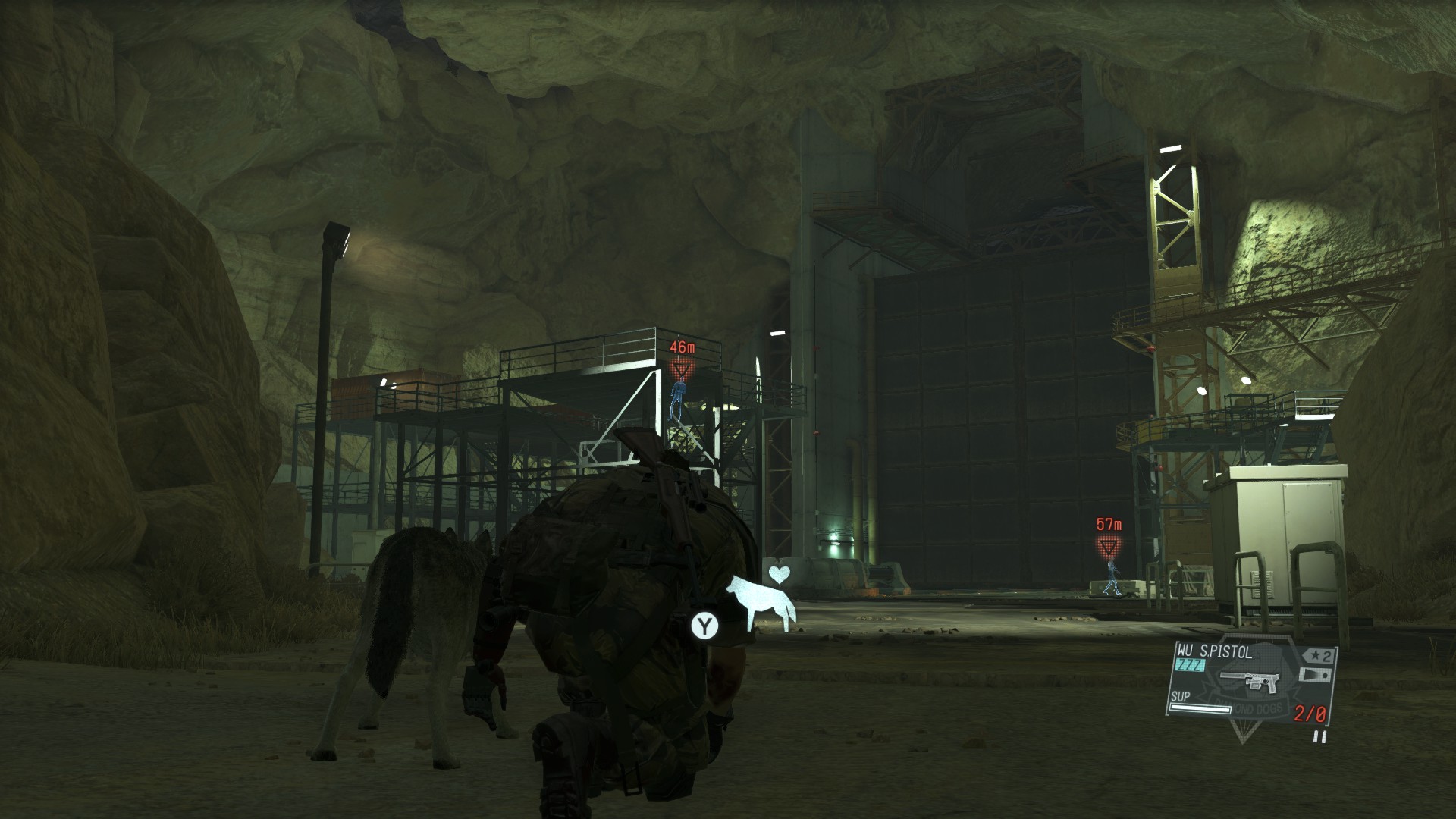
Upgrades also play a key role with Snake’s four AI ‘buddy’ support units in the game. There’s his horse, but also a dog that can add enemy locations to your HUD and attack them. There’s a mech, too, which can offer additional firepower and speed, and a sniper, Quiet, an invaluable AI companion only let down by her disappointingly porny character design. Like your weapons, you can call in a new buddy and swap out the old one at any time with the iDroid, another refreshing layer of flexibility, and they each progress in interesting ways. They’re all controlled using the left bumper on a controller. You can order Quiet to provide covering fire, tell your dog to attack enemies or order your horse to do a shit.
You can use all of these options or none of them—that’s the point. Don’t worry if this array of stuff to do sounds overwhelming: Kojima Productions sensibly drip feeds these elements into the game across the first ten hours so you know how to use it all. I found the journey to figuring out my optimal loadouts to be tremendous fun. Missions can be replayed at any time, so it can be worth going back just to see how an assassination might pan out with a silenced sniper rifle instead of a shotgun.
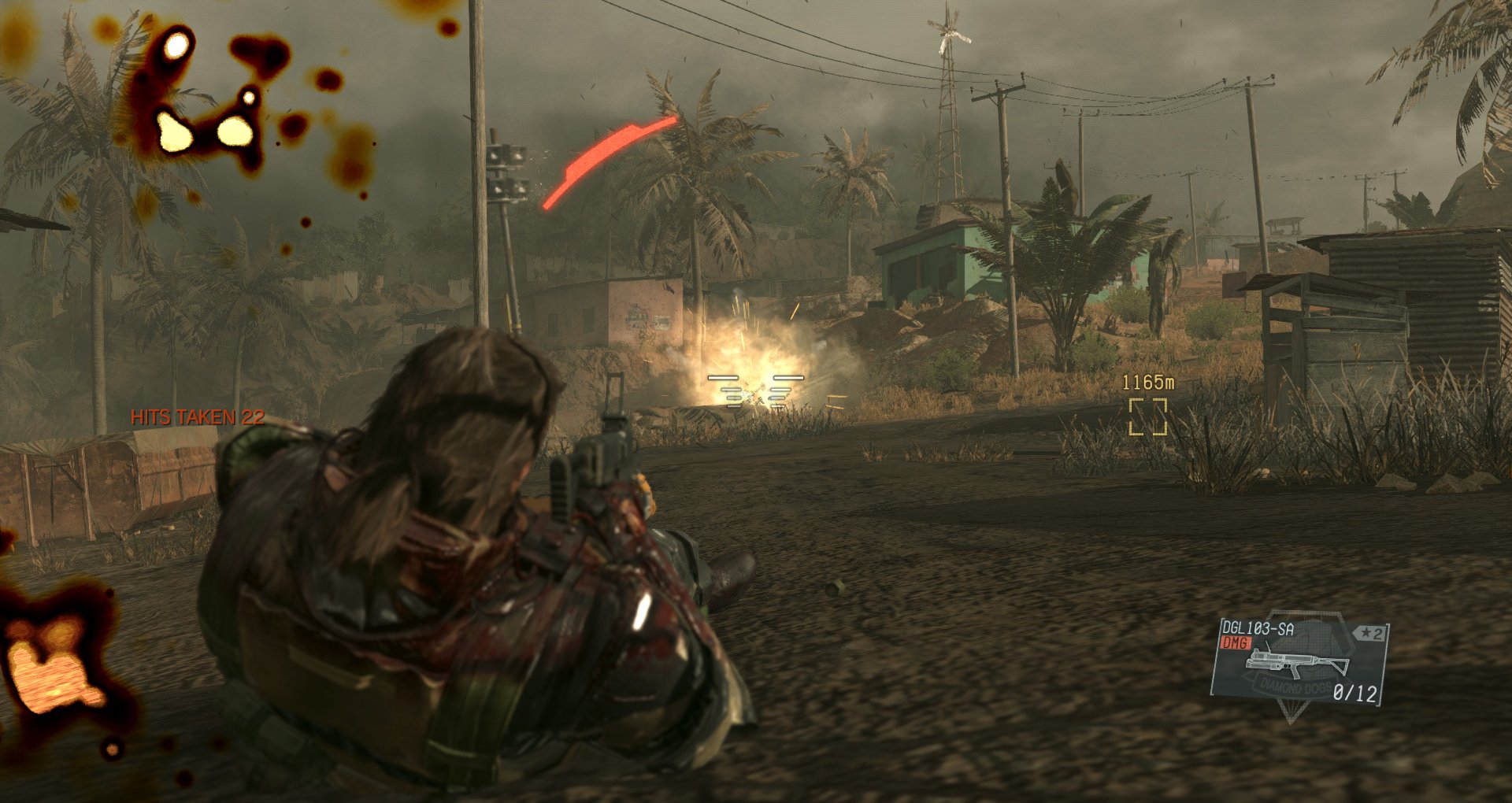
I’ve seen all of The Phantom Pain’s elements feature separately in other games, but not brought together in quite this way. I love that the end-of-mission scoring system rewards a multitude of different playstyles, and not just the stealth-only approach. While there are heavy bonuses for ghosting and penalties for being caught by the enemy, you’re also strongly rewarded for headshots or speed. I think this encourages players to be more experimental, and not to feel like it’s the end of the world if they’re spotted. This is a game where it feels great to fire a gun, and you’ll have dozens in your inventory. You should totally use them.
I recommend The Phantom Pain without question to someone unfamiliar with the series. In fact, I think existing Metal Gear fans will be the hardest for The Phantom Pain to win over: the structure is just so different, and a few boring early levels which are functionally tutorials initially made me feel like they’d accidentally purged all the fun elements out of Metal Gear. But once I reached the eight-hour mark, I realised how in love with it I was, and how much fun I was having just doing daft stuff like trying to blow up a bear with C4, lobbing a sleeping guard off a cliff to his death or Fulton-ing a tank into the air with a dude inside because I was too lazy to blow it up. It’s not like these moments happen every few hours in MGSV; they occur in pretty much every mission. They’ve built a world that lets the chaos unfold, and it never stops being impressive.
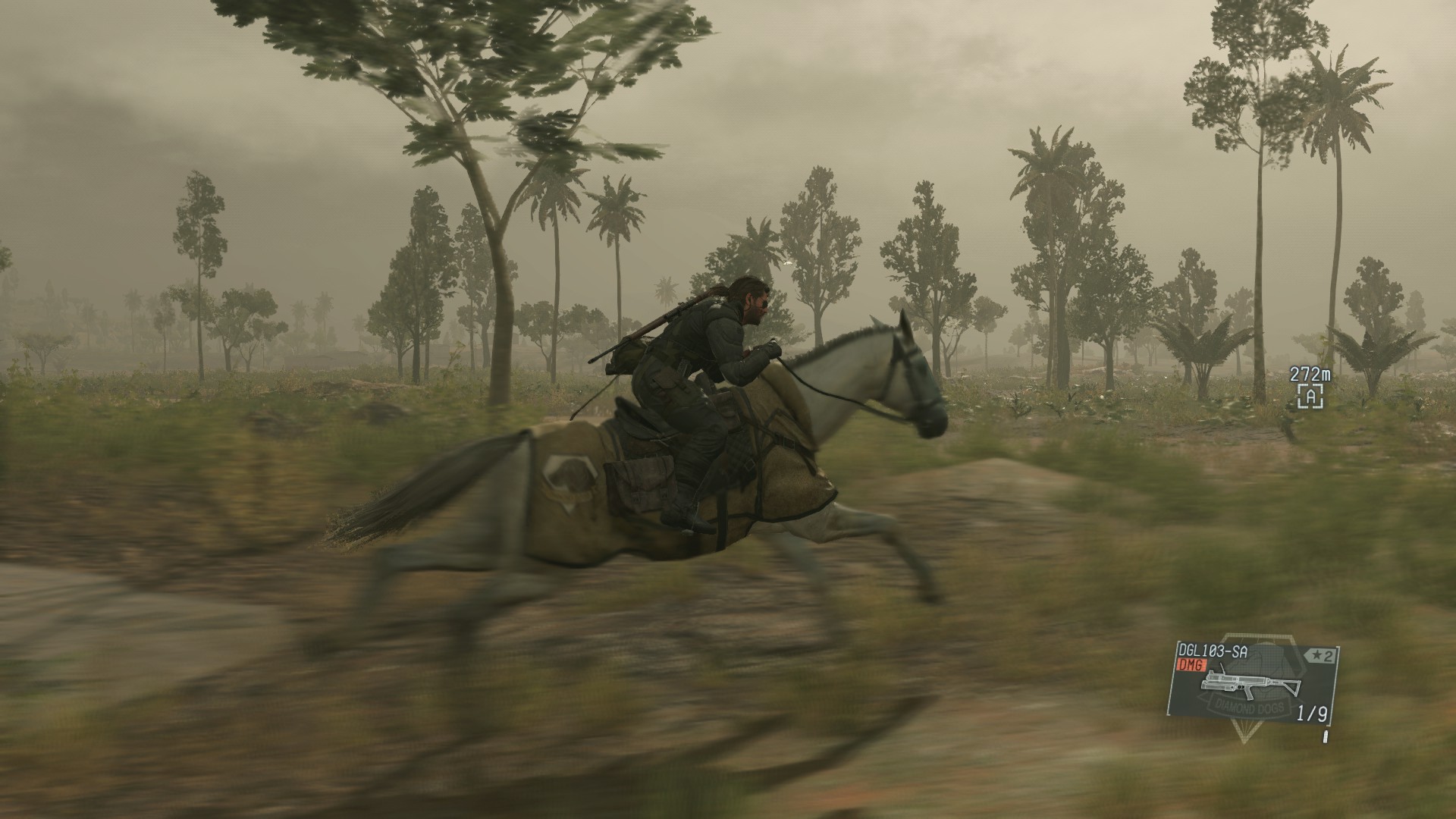
The environmental design feeds into this madness perfectly, and some of the backdrops to missions are gigantic, with loads of points of entry. While as open worlds they feel a little quiet and spread out, the more populated areas of refineries, abandoned towns or palaces are all like playgrounds that encourage repeat runs of missions. I’d happily swap the old Metal Gear hub environments for these any day. In retrospect, they feel like prototypes for what the team at Kojima Productions truly wanted to build.
From a Metal Gear fan’s perspective, I think the pared-down story may disappoint, and Kiefer Sutherland’s performance as Snake, while fine, is so rarely heard in cutscenes that he might as well not be there at all. Specifically for a PC audience, though, some who I assume have only played Ground Zeroes before, the lack of an overbearing mythos makes this very easy to digest—and I think on balance that’s a much better approach than pandering to fans who know the lore inside out.
There are some parts of old Metal Gear that would’ve made a welcome transition, though: other than a couple of great sniper duels and one larger fight I can’t talk about without spoiling, I thought the selection of boss fights was pretty dull, particularly an annoying recurring scrap with some cheap zombie soldier men that are little more than bullet sponges.
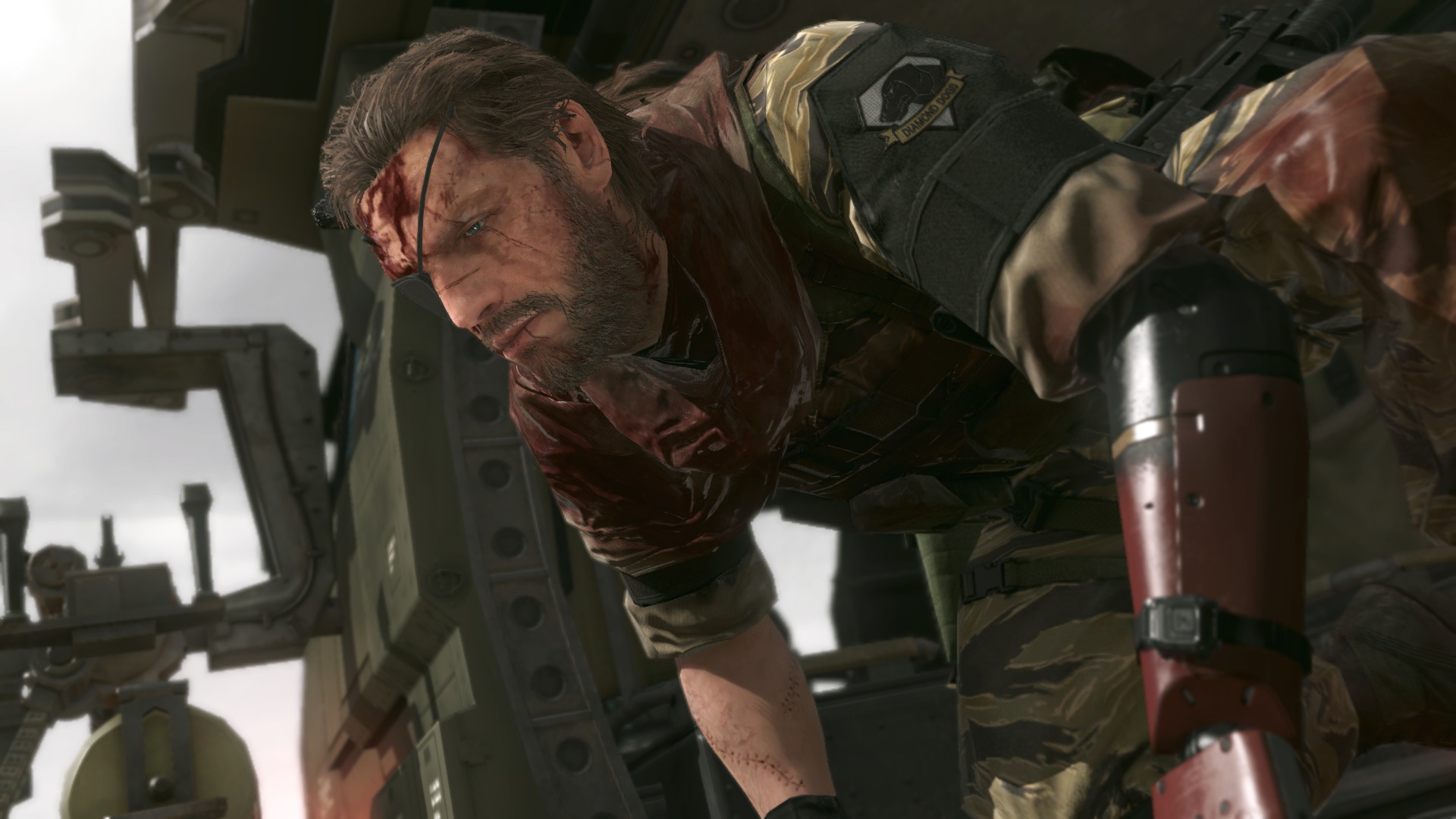
Bad boss fights occupy less than hour of MGSV total, though, and that’s a tiny fraction of my playtime so far. This is an oddly massive experience, with a pretty extensive and challenging endgame, too. Even the most basic playthrough will clock in at 25 hours, and those that really get deep into experimenting with the game will easily reach 50 hours+.
That time has sailed by. I’m truly obsessed with The Phantom Pain, and I think it’s a dazzling example of how exciting open world game design can be. Not just being set in a big or beautiful world, but having the building blocks in place to let players have moments that feel like they belong to them. This is the best I’ve seen that done to date. Metal Gear Solid V is a standard-setting sandbox game that makes perfect sense on PC, and is likely to be the most influential Metal Gear Solid game since the first.
A generous stealth sandbox masterpiece that'll delight both new and existing fans of Metal Gear.
